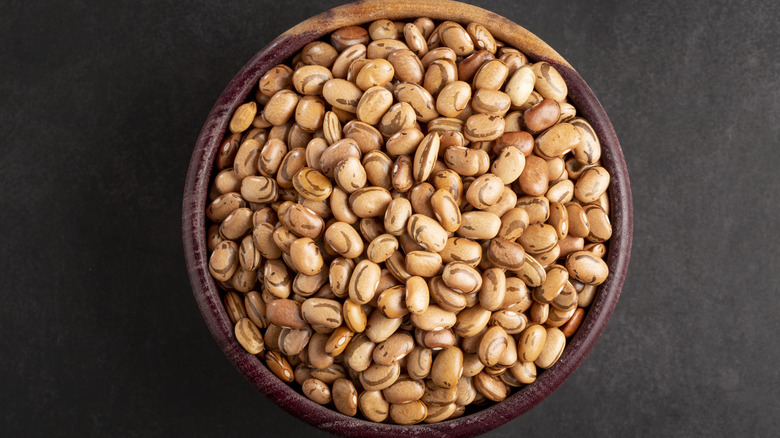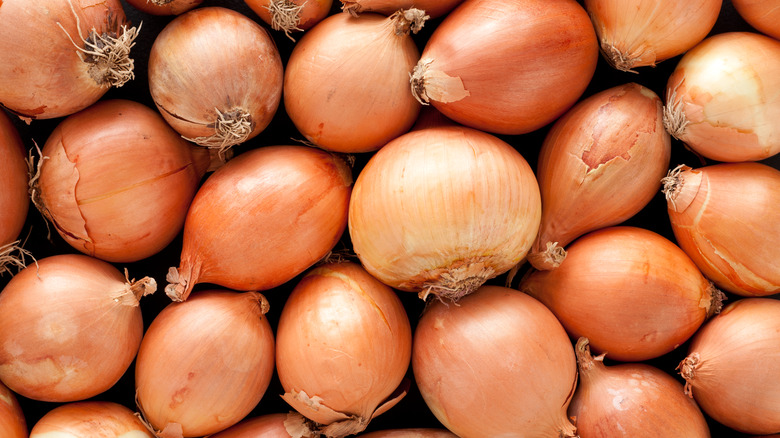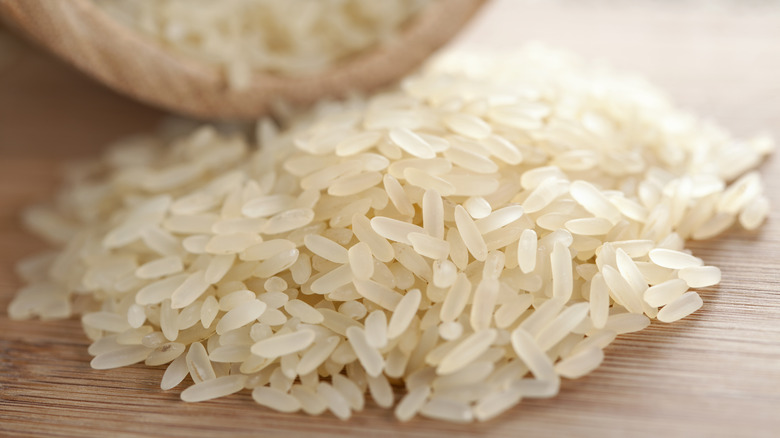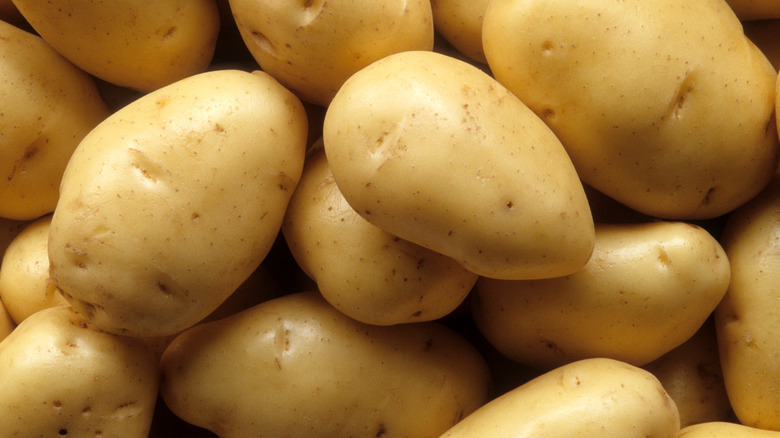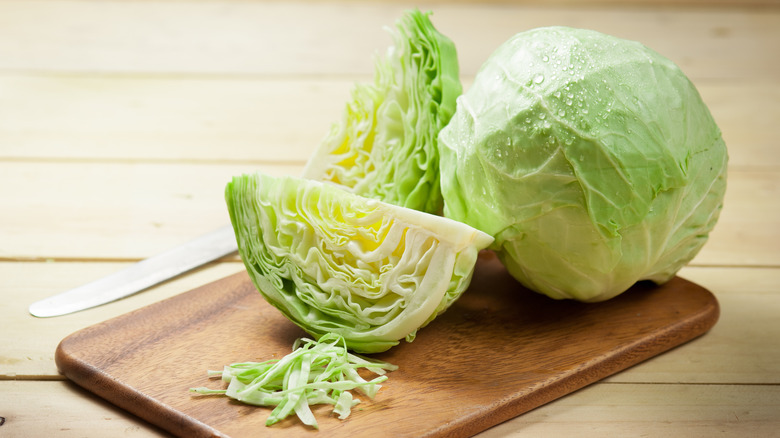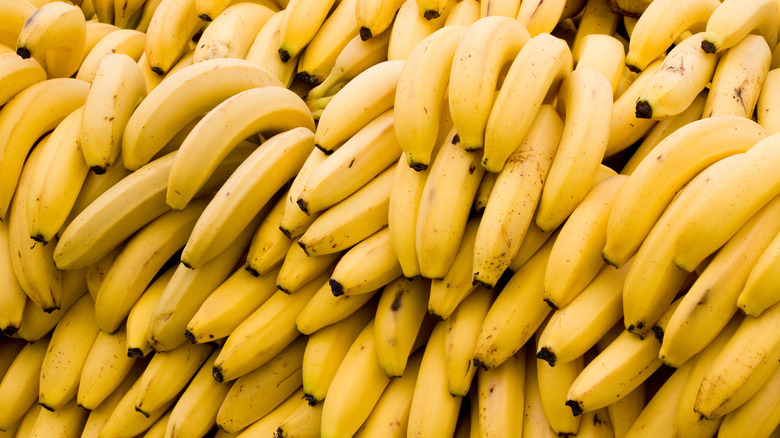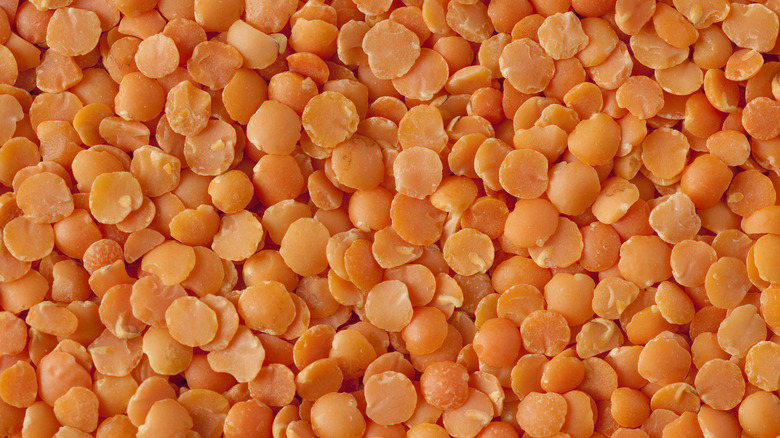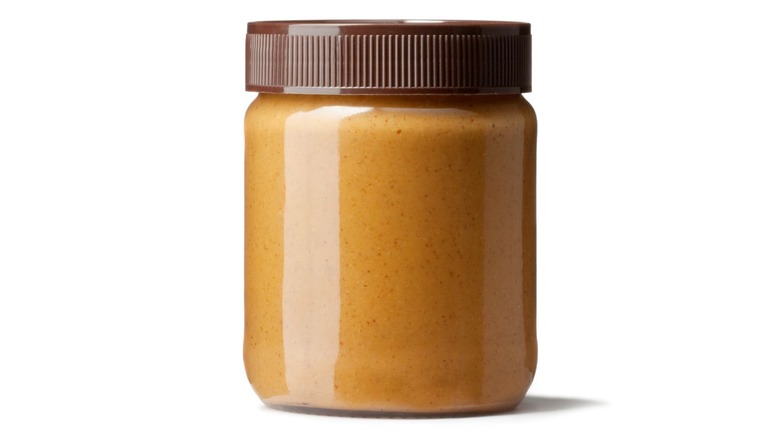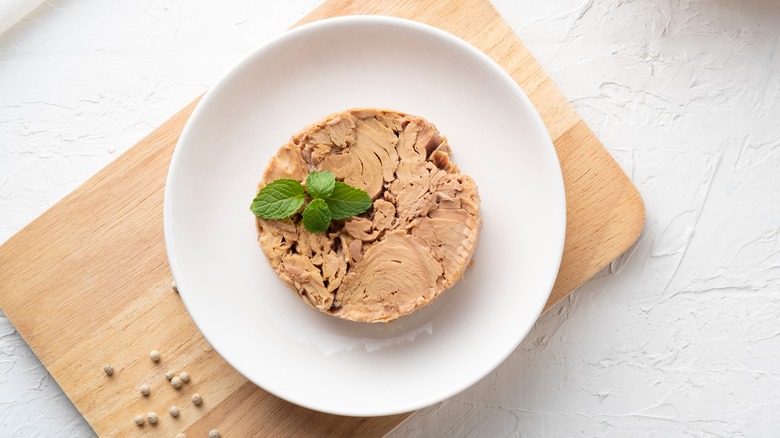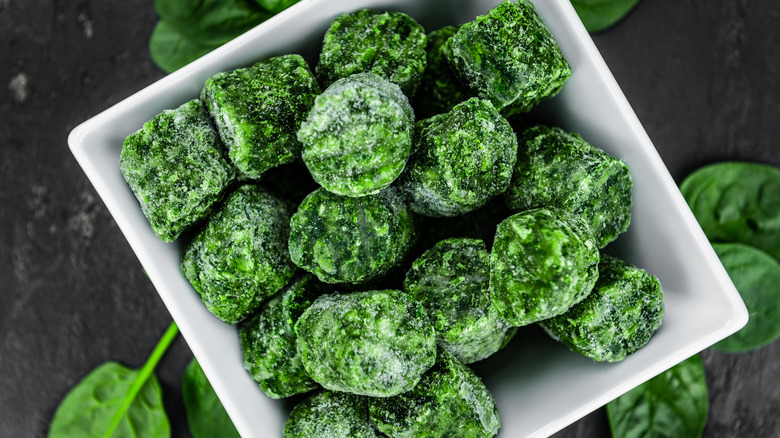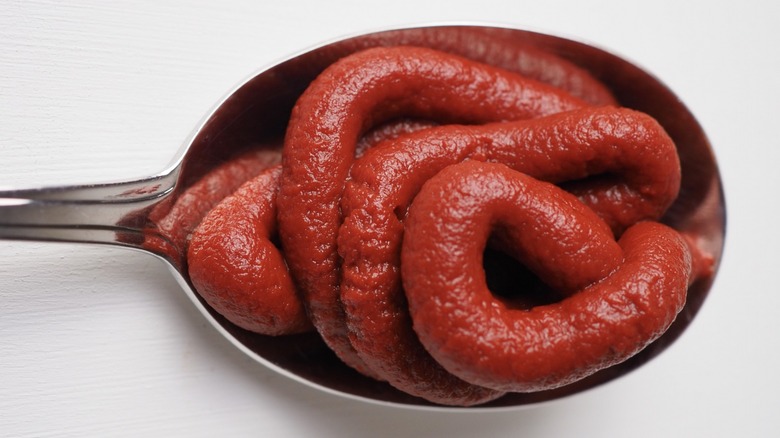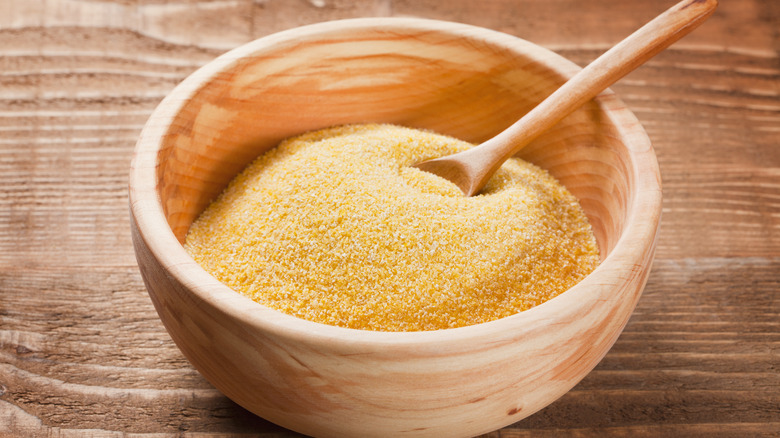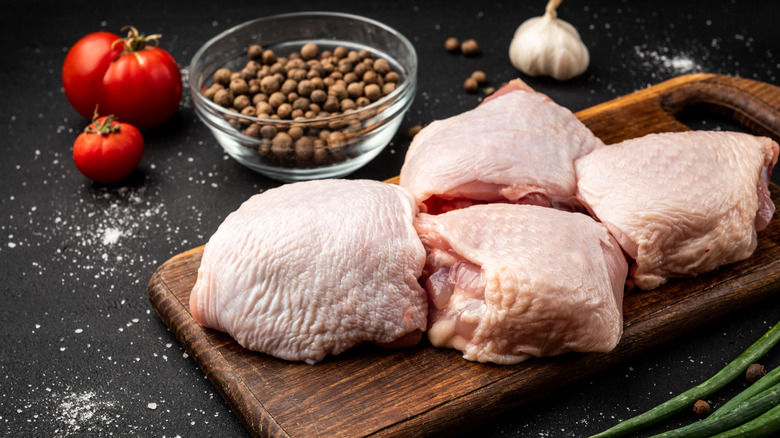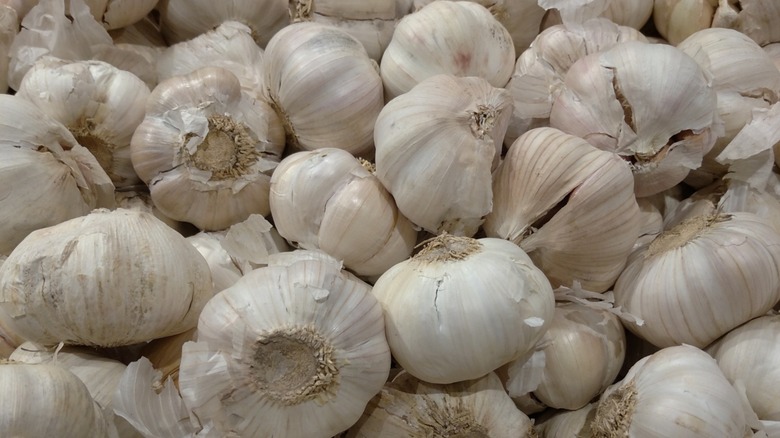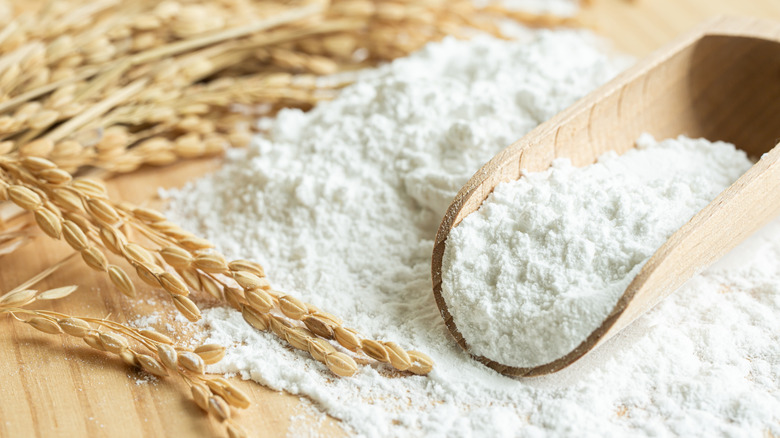The 15 Best Cheap Ingredients To Buy On A Tight Budget
If you've been finding your groceries becoming uncomfortably expensive recently, you're definitely not alone. It's no secret that the price of food has risen steadily over the past few years, and it's likely things will stay this way for a while. Per the USDA, food prices in July of 2023 were almost 5% higher than they were a year previously, with the cost of all food categories increasing faster than the average rate. Prices have continued to soar after 2022, when the price of many at-home foods rose over 10%, with eggs having the sharpest increase.
Many of us are feeling the squeeze and need to pay closer attention to grocery prices to make ends meet. One simple step you can take is to buy store-brand foods, which are typically the most affordable option. Another is to avoid prepared foods and ready meals. These may seem cheap, but they can really add up. For those who are able, it's possible to save a lot of money by spending a little more time in the kitchen, cooking with a few carefully chosen ingredients.
Here's a handful of the best low-cost groceries you can buy, for their price and nutritional value, with a few ideas on how to use them. This is all based on 2023 retail prices in the US but, while some prices vary from place to place, much of this advice is generally true elsewhere in the world too.
1. Beans
It's almost a cliché to mention beans in a list like this, but they really are one of the cheapest staple foods you can buy, and certainly the cheapest source of protein. Beans are rich in several nutrients, including phosphorus, magnesium, potassium, and iron. They also provide plenty of folate (vitamin B9), essential for metabolism to help you properly metabolize all the protein you need.
Canned beans are convenient and are consistently one of the least expensive canned foods. For the most cost-effective option though, dried beans are the way to go. In fact, a pound of dry pinto beans can cost under $2, with a single serving costing as little as 15 cents. If you buy dried beans though, be sure to also pick up some baking soda. Beans are full of oligosaccharides — large sugar molecules that you can't digest, which is why they can make you gassy. Soaking dried beans overnight with some baking soda and then discarding the water will help to remove oligosaccharides, making them easier on your stomach as well as quicker to cook.
A staple part of diets across the world for centuries, there are dozens of delicious recipes to cook with beans. Black beans can be used in Mexican dishes like tacos or chilaquiles, spicy black-eyed peas can make a filling meal, and garbanzo beans (chickpeas) can be used to make Indian dishes like chana masala or Middle Eastern recipes like falafel. There's a lot of variety to enjoy!
2. Onions
There's no reason for budget food to be tasteless, and onions are one of the best things to add both flavor and nutrition to your diet. There's a reason they're used in so many different cuisines around the world! US retail prices for onions can be as low as 78 cents per pound and they have a long shelf life, so it's fine to stock up when you can. Bought fresh, they can usually last for 2 to 3 months in the pantry. As well as being a great source of fiber, onions are packed with nutrition like vitamins B and C, and have been linked to reduced blood sugar levels and improved bone health.
With a selection of varieties to choose from, too. Starchy yellow onions are great for cooking, while red onions are also good for pickling and are flavorsome enough to enjoy raw in salads. Meanwhile, the sharp taste of green onions is essential to a lot of East Asian cooking. Recipes with onions are so numerous that trying to list them would be an impossible task, but most home cooking can benefit by chopping some and throwing them in.
3. Rice
Rice is one of the world's most popular staple foods, eaten regularly by 3.5 billion people globally. Rice can be found on sale for as little as $1.24 per pound, meaning that a single 2-ounce serving can cost slightly over 15 cents. Often used as a primary source of carbohydrate, rice can also provide you with dietary minerals like manganese and selenium. While simple white long-grain rice is the cheapest and easiest to find, there are several types of rice out there, some more nutritious than others. Generally speaking, brown rice is healthier and more nutritious than white, containing more fiber, but it's also a bit more expensive and has a shorter shelf life.
Rice is typically served together with other dishes, but there are plenty of things to cook that allow it to take center stage. An easy option is to try one of the many fried rice dishes from around the world. Alternatively, you could try making congee, a Chinese rice porridge popularly enjoyed as a breakfast and comfort food around East and Southeast Asia.
4. Potatoes
Potatoes are one of the cheapest vegetables you can buy, with a typical price of around $1 per pound. You may have heard that it's possible to survive on potatoes alone and, while this is a myth, it's true that they do contain all the essential amino acids your body needs. According to UC Davis, potatoes are a good dietary source of potassium, as well as vitamins A and C. Additionally, their skin is a good source of fiber, so as long as they're thoroughly cleaned, you may want to consider cooking them skin-on.
Potatoes have been a part of working-class diets for centuries, so there are plenty of ways to cook them that are both low-cost and delicious. One easy recipe to try is potato bread, like Irish potato farls, which make for a delicious addition to the breakfast table. Another cheap potato dish comes from Spain, where patatas a lo pobre is a flavorsome vegetable dish with a name that translates to "potatoes of the poor." Having long been one of the best cheap food staples, potatoes are always a great choice for grocery shopping on a tight budget.
5. Cabbage
Leafy vegetables are an important thing to include in your diet, and the cheapest fresh one available is usually cabbage. Easy to find on sale, cabbage typically costs just 45 to 91 cents per pound. While many people don't pay much attention to cabbage, it's a nutritious vegetable to include in your cooking, rich in various vitamins and minerals. Cabbage can provide you with vitamins C and K and, while not as densely nutritious as foods like beans, it's rich in fiber and antioxidants. There's some evidence that cabbage can even help to reduce blood pressure.
Many of us may have unpleasant memories of unappetizing boiled cabbage, but there's no reason for this vegetable to be boring. At home, cabbage can be used to make anything from kimchi to some delicious sweet and sour stuffed cabbage leaves. With a little more time, you can even try your hand at pickling and make your own sauerkraut to enjoy a classic dish eaten not only in Germany but also in France, where it's known as choucroute.
6. Bananas and plantains
Including some fresh fruit in your diet is always a good idea, and the cheapest fruit available are bananas. They can be found on sale for as little as 50 cents per pound, making them a very affordable option. As well as being rich in sugar and carbohydrates, bananas are famously one of the best sources of dietary potassium, with a single fruit typically containing around 450 milligrams of it. Additionally, these iconic yellow fruits can also provide you with magnesium, manganese, and vitamins C and B6, as well as a good amount of fiber.
Many people enjoy bananas as a simple snack, but they can also be cooked in a few recipes, with homemade banana bread being a delicious choice. For a more savory option, you can also opt to buy plantains. Essentially the big brother of the more common bananas, these are similarly cheap but less sweet and with a starchy taste more similar to potato. Plantains are cooked as a savory vegetable in many parts of the world, and fried plantains are a delicious side dish. They go well with things like stews or jollof rice, or they can just be eaten on their own with a little ketchup or hot sauce.
7. Lentils
Lentils are popular among health food enthusiasts, and for good reason. They're not just healthy but cheap, versatile, and easily available. In 2023, the lentil harvest was one of the largest in history. This may reduce their prices in the future but, for now, lentils can be found on sale for as little as 45 cents per pound. There are a few different kinds available too, like red and green, with some variation in price and flavor. The good news with lentils is that they really are extremely nutritious. All lentils are rich in protein and B vitamins. They're also full of minerals like iron, zinc, phosphorus, and manganese, as well as containing polyphenols — antioxidant compounds that can reduce blood sugar levels and potentially even inhibit some cancers.
A classic way to serve lentils is in soups and stews. Lentil soup has been popular in Europe since the days of the Ancient Greeks, and is old enough that it's even mentioned in the Bible. Another old recipe for simple rice and lentil dish, mujaddara, was first written down in one of the world's oldest-known cookbooks and still makes for an easy, cheap, and delicious meal today. But there's no reason not to get creative with lentils too, and there are plenty of options for how to serve them. They can be added to rice bowls, mixed into salads, or even pressed into burgers.
8. Peanut butter
Technically not a nut but a type of bean, peanuts are historically a cheap staple food. There's a reason, after all, that underpaid workers talk about being "paid peanuts." Retail prices for peanuts are as low as 45 cents per pound, while peanut butter is a little more expensive at around $1.50 per pound. Some people should skip this one because of allergies, but peanut butter is quite a nutritious foodstuff. It's high in fats, albeit healthy ones like oleic acid, while at the same time being low in carbohydrates, making it a fine choice for anyone on a low-carb diet. Additionally, it's an excellent source of protein and vitamins B and E, with a good amount of manganese, copper, and magnesium.
Peanut butter is usually thought of as a sweet food in Western countries, where it's usually enjoyed in sandwiches, but it can also be included as an ingredient in many savory dishes. It's an essential ingredient in making Southeast Asian recipes like chicken satay, and African recipes like Ghanian groundnut soup. For a cheap and easy way to give your home recipes an extra boost in protein and flavor, peanut butter can be a surprisingly good option. When using it in cooking, it's probably best to try and find some without too much added sugar.
9. Canned tuna
A popular pantry food, canned tuna can be found on the shelves in many people's kitchens. Meats tend to be among the most expensive items on most people's grocery lists, making canned tuna an attractive option on a tight budget. It can be found on sale for prices as low as $3 per pound. Its long shelf life makes canned tuna a handy thing to keep in the cupboard for times when money is tight. Tuna is also an oily fish, making it rich in healthy omega-3 oils. As well as being packed with protein, it's also a good source of vitamin D and selenium.
Canned tuna isn't for everyone but, while the flavor and texture may not be as good as with fresh tuna, it's certainly one of the cheapest seafood options out there. There are several varieties of canned tuna available to buy, and it's a versatile enough ingredient to work well in all kinds of dishes. A simple tuna salad is a classic choice, and canned tuna also tastes delicious in a wholesome casserole.
10. Frozen spinach
As leafy greens go, spinach is a particularly good choice. It's famously rich in iron, but is also a good dietary source of magnesium, potassium, and vitamin E. Eating spinach is linked with a range of health benefits, including improved skin, hair, and bone health, and helping your body control blood sugar levels. Spinach is also inexpensive, with retail prices of around 91 cents per pound.
The cheapest option for spinach is to buy it frozen and, perhaps surprisingly, frozen spinach can actually be more nutritious than fresh leaves. After being picked, fresh leafy vegetables tend to gradually lose their nutrients over time, but freezing locks them in, keeping frozen spinach as rich as when it was freshly harvested. Helpfully, in many dishes, frozen spinach can work just as well as fresh leaves. It can be mixed with feta cheese and baked into a buttery Greek spinach pie, spanakopita, or can be combined with spices and diced potatoes to make a mouthwatering Indian spinach curry, saag aloo.
11. Tomato purée
Tomatoes are one of those foods that are ubiquitous in world cuisines, and one of the cheapest ways to use them in your cooking is to buy them canned. Diced canned tomatoes can cost a little over $1 per pound, but tomato purée is an even cheaper option at slightly over 90 cents per pound. Tomatoes are a good source of vitamins, B, C, and K, as well as potassium, but the main reason they're so popular is for their distinctive flavor.
One of the simplest ways to use tomato purée is in tomato soup, as a comfort food that's both wholesome and easy to prepare. Tomatoes are an essential ingredient in cuisines from all around the world though, from Italy to India, so there's no shortage of inspiration. Whether you're spreading it onto a pizza base or making a rich pot of murgh makhani (butter chicken), you'll need some of this versatile ingredient. Of course, tomatoes are originally from Mesoamerica, so they're used in all kinds of Mexican dishes. An easy and satisfying one is to combine it with rice to make arroz rojo.
12. Cornmeal
For being both abundant and affordable, corn has historically been a cheap staple food in America. It still comfortably fits this role, with cornmeal available for just under 70 cents per pound. A starchy foodstuff, cornmeal also contains some protein and fiber, as well as being a good source of potassium, phosphorus, and magnesium.
Traditionally used in working-class foods in the US, cornmeal is essential in a few classic recipes from the Southern states, like hot water cornbread or grits. It can also be found in cuisines from elsewhere in the world, from the polenta enjoyed in Italy to the cornmeal porridge eaten for breakfast in Jamaica. While many people may overlook cornmeal, it is a nice and cheap addition to add to your grocery list and it has a good shelf life. A little can go a long way in your cooking!
13. Chicken on the bone
Not everyone eats meat, but for those who do, cuts that are still on the bone are typically the cheapest option, and bone-in chicken is one of the most affordable. Typically, chicken thighs cost around $3 per pound, while drumsticks cost even less at $2 per pound — though, of course, this does include the weight of the bone. As well as being a good source of protein, like other meats, chicken is also rich in potassium, phosphorus, and B vitamins.
While it's often cooked on the bone, chicken thighs can also be filleted and used in much the same way as any other cut of meat. To be truly frugal, it's best not to throw those bones away either. Chicken bones can be boiled to make a wholesome chicken stock, which can be used to add some umami depth and nutrition to other dishes like soups or noodle bowls. While it takes some time to get a rich-tasting broth, this effectively makes chicken on the bone a two-for-one option to add to your grocery list.
14. Garlic
The deep flavor of garlic is used in cuisines around the world, and it's an inexpensive item to pick up from the supermarket. You can typically find it on sale for around $1.81 per pound — but let's be honest, you're unlikely to ever need a whole pound of garlic in one go. As nutritious as it is flavorsome, garlic is a rich source of potassium and comes with a range of health benefits. It has some antibacterial properties, and there's evidence to suggest adding it to your diet can improve bone health, as well as reduce the risk of heart attacks.
Garlic is also a good ingredient to keep in your pantry. As long as it stays unpeeled, it can have a shelf life of around six months. Some chopped garlic can add its distinctive flavor and richness to all kinds of dishes, and many recipes from East and South Asia begin by frying some in a hot pan. There are a few dishes though, which let it take the spotlight, like freshly cooked fragrant garlic bread. And speaking of bread...
15. Flour
For those who can eat it, plain flour is one of the most basic cooking ingredients and is helpful to keep handy in your kitchen. Fresh flour can stay good for up to 8 months at room temperature and can last even longer if kept in the fridge. It's also a very cheap dietary staple, costing around 56 cents per pound. However, according to the USDA via Food Business News, due to drought conditions, the price of flour is likely to rise in 2024, but it's so versatile it'll likely still be worth adding to your shopping list.
Home baking may not be for everyone, and does require that you have a suitable oven, but it can be an excellent way to save money. It's even cheaper if you make sourdough, letting you save more money by not buying yeast. Most people can expect to make bread at home for prices as low as 40 cents per loaf while also enjoying the delightful fragrance of fresh baked goods. Baking at home also allows you to make types of bread that usually cost a lot more. Pizza is a good option. Factoring in every cost, a basic cheese and tomato pizza can cost less than $2. Far less than you'd spend on takeout or even frozen supermarket pizza. While it may take a little work, there's no reason you can't still treat yourself while on a tight budget.

